Pushing South
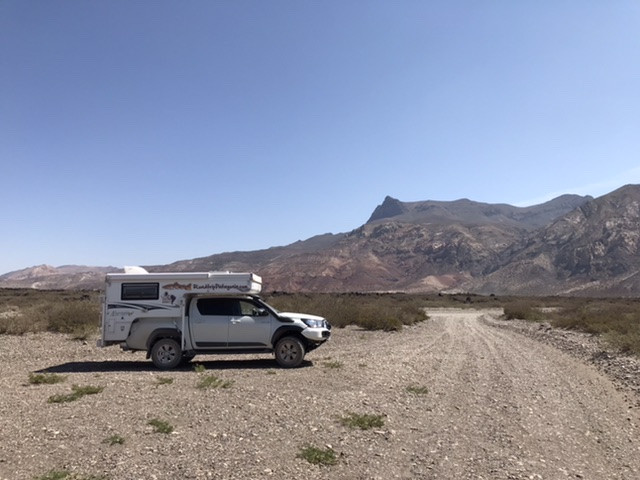
We had six days to reach Coyhaique, Chile. We’d spent a little more time than we wanted in Mendoza, so, there was some time to make-up. Wine, and good wine, is effectively distributed around this country so we don’t need to stay near the source. We also determined we were tired of being sweaty-hot during the days so we made the decision to do three hard travel days to reach Chubut Province and Patagonia.
Although Google Maps or iMap will give us an estimate of time to travel, say 400 miles, it takes us a lot longer. The truck and camper combination are somewhat heavy. We can’t handle rough roads or winding roads at full speed. We have to take it a little slower.
Leaving Mendoza, Ruta 40 is a four-lane, divided expressway. It took us over a couple hours to leave what seemed to be endless fields of grapes as we went South. As we stuck faithfully to our intention of keeping to Ruta 40, the road gradually narrowed and, as we reached the mountains, became more winding. The fences disappeared at times and livestock were right on the edge of the road.
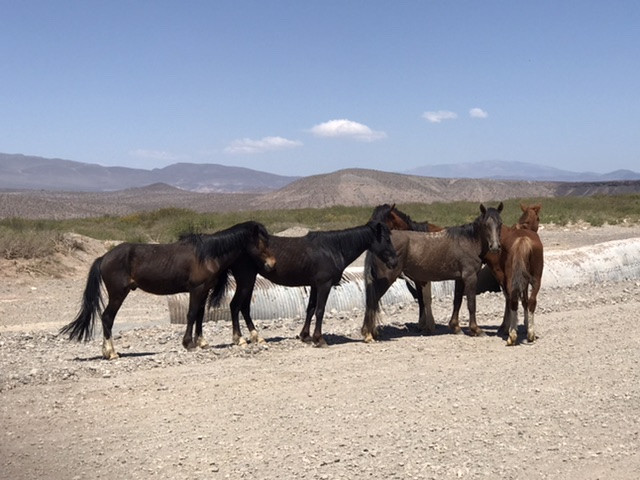
As we reached the southern end of Mendoza province 40 took a right. We followed it and in short order were on a narrow, two-lane gravel road that wound for several hours of molar-pounding cadence. It seems to be a section of the road that the government forgot. There would be a quarter-mile of bad asphalt with a substantial lip on either end interspersed by several miles of gravel with washboard and trench.
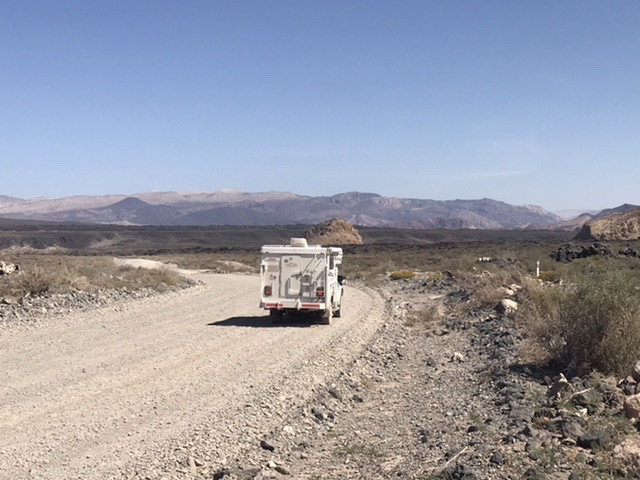
Most of the vehicles we met were, like us, driving extremely slow and cautious. Every so often some asshole would fly by as if he was running a cross country race then shower us with stones.
This entire section of road was of spectacular beauty. It followed a river called the Rio Grande, and was a place where numerous black lava flows, some seemingly only decades-old reached the river from the surrounding mountains of perfect volcanic cinder cones.
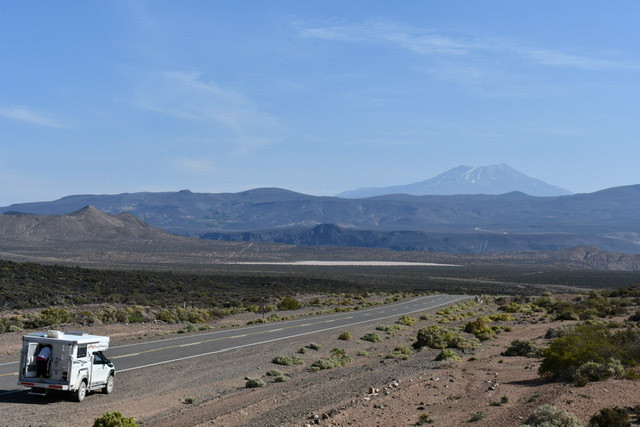
As we entered Neuquén Province the highway instantly became straighter smoother and of recently laid asphalt. Ah, officially Patagonia. We spent hours hunting side roads for a place to camp. One narrow track led us back to a simple homestead where we were greeted by 100 bleating lambs with eight barking dogs sounding the alarm to two shy children. Another, an “abandoned sheep camp” advertised on the GPS, brought us face-to-face with several gauchos drinking wine.

With the sun rapidly going down we located one campsite advertised on the GPS to be by a dry lake bed. Upon waking to a cacophony of cool birds the next morning we found our campsite to be literally covered in fossils

Arriving to the next town, Chos Malal, literally on fumes in our fuel tank, we stocked up on groceries and searched for the only fuel station in town.
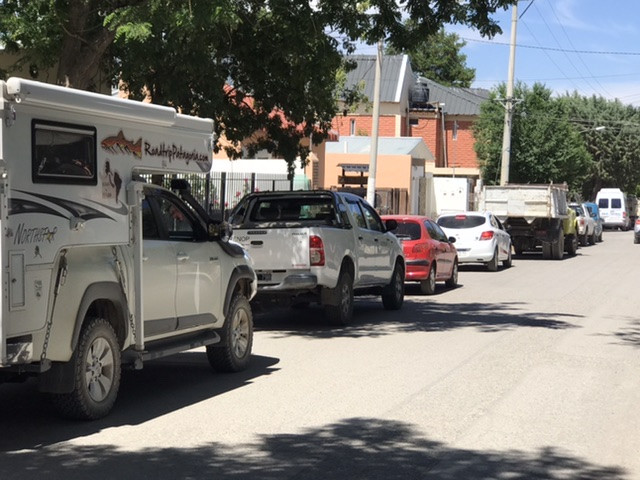
Finding the station, and seeing a car departing the pump, we pulled directly in to an orchestra of horns behind us. The smiling attendant pointed to a line of vehicles that extended two blocks up the hill. We circled the blocks repeatedly until we found the end of the line, took our place and waited an hour to get what would be the only fuel for two hundred kilometers.
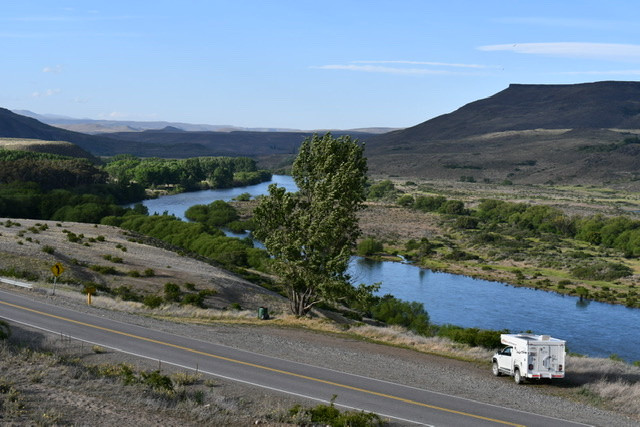
Another hard day of driving against heavy side winds in Neuquén Province took us to Junín de Los Andes. The rivers were gradually becoming clear. Junin is a quaint fishing town with lots of tourist facilities. We made camp on an island surrounded by the river flowing feet from the camper.
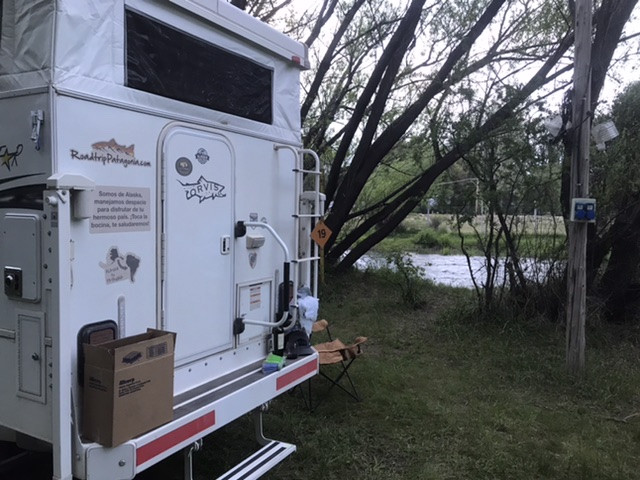
Our Destiination was an estancia in Chubut province.
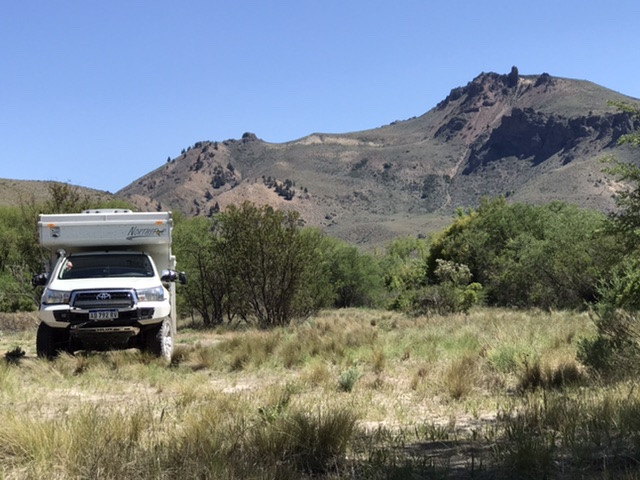
We woke and pushed hard for an entire day through the beautiful Canyon of the Rio Limay, past the famous Lakeside city of Bariloche and down 40 through beautiful, forested canyons and then back out onto the Patagonian plain.
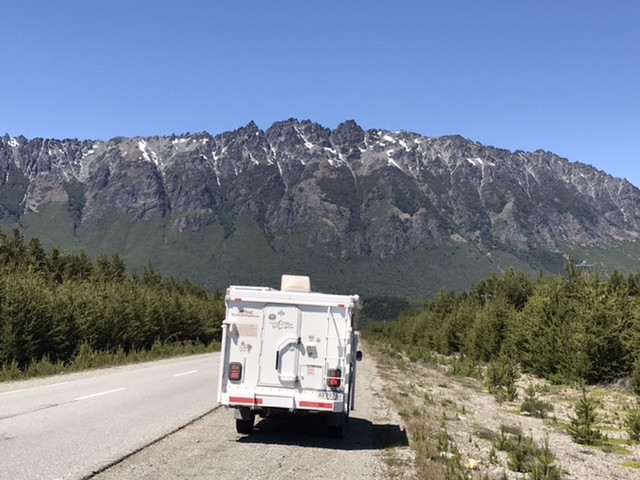
We arrived to Estancia Tecka at about seven in the evening.
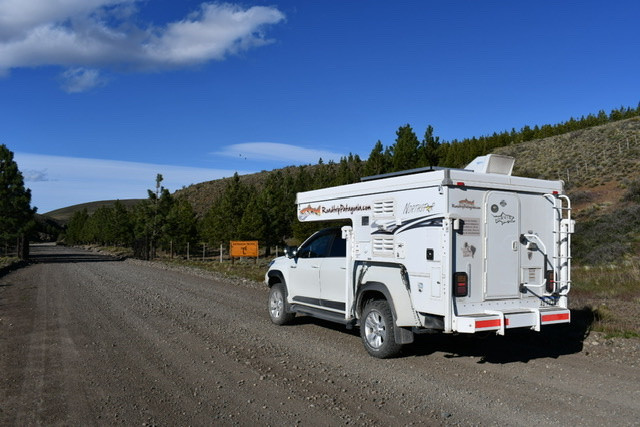
We noticed as we are going south the evening remains longer.
